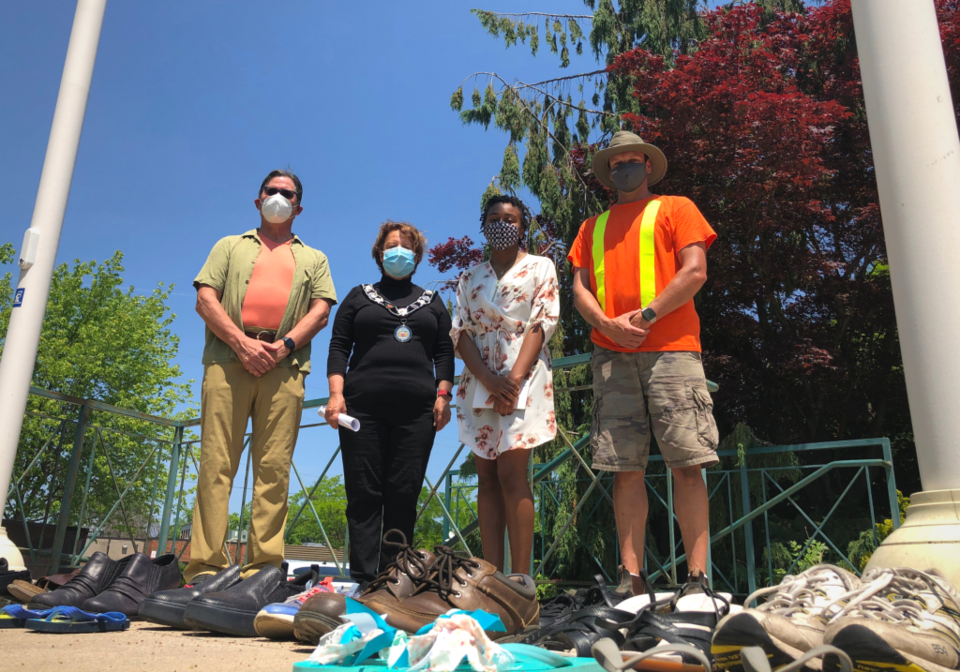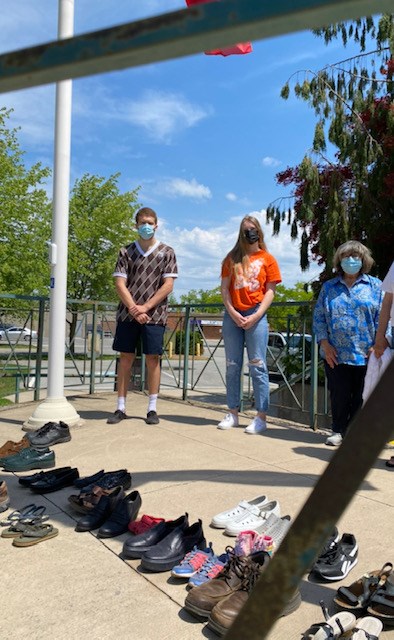
Following is a letter read by Michaiah Ivri at a ceremony to for Indigenous Children at the town hall Wednesday.
I would like to start off by acknowledging that the land on which we stand is the traditional territory of the Haudenosaunee and Anishinaabe peoples, many of whom continue to live and work here today. This territory is covered by the Upper Canada Treaties and is within the land protected by the Dish With One Spoon Wampum agreement. Today this gathering place is home to many First Nations, Métis, and Inuit peoples and acknowledging this reminds us that our great standard of living is directly related to the resources and friendship of Indigenous people.
Every year, on Sept. 30, people across Canada wear orange shirts for Orange Shirt Day.

A six-year-old girl named Phyllis Webstad (she is Northern Secwpemc from the Stswecem’c Xgat’tem First Nation) went shopping with her grandmother for a beautiful orange shirt to wear on her first day of school. She was just like you and me on our first day of school; excited and nervous all at the same time. She said, “Just like any other six year old, I was happy to be going to school — I didn’t know exactly what was to come.” When she arrived at school, they tore her favourite orange shirt from her and she never saw it again. We wear an orange shirt to honour the children who were forced to attend residential schools.
Indigenous children were abducted from their homes, stripped of their culture, and put in abusive boarding schools called Residential Schools. This was all sanctioned by the government and Christian churches. The Catholic church ran 70 per cent of residential schools with government funding.
Children’s heads were shaved and their names were replaced with numbers; but that’s not all. The goal of these residential schools was to take away the children’s identity and replace it with a Eurocentric one. Think of it as replacing the skin you are in. How uncomfortable and unnatural would that feel? Imagine speaking the language you have known all of your life, and getting beaten for speaking it. You are told instead to speak a foreign language. This (among other things) was what these children had to endure. The landmark Truth and Reconciliation Commission called this “cultural genocide.”
There are effects that are still being felt today. There are parts of Indigenous people’s culture and traditions that are lost. There are children who never came home, and there is land that has never been returned. Residential schools and all of the assimilation that was forced upon Indigenous people is a shameful section of Canadian history. But we mustn’t ignore it because it hurts. We must move forward with this knowledge, and right the wrongs of the past, so that we do not repeat them in the future.
We mourn the death of all the Indigenous boys and girls who have been omitted from our story until now. We are here for the survivors of residential schools and the families who never got to see their children again.
We need to make sure that we never forget.
The tragic discovery of the 215 Indigenous children found buried on Kamloops Indian Residential School grounds should spark conversations to inspire real change, and to help our Canadian family heal together.
I say these things in the name of the Canada we want to build. One that is a mosaic of unique people from different backgrounds. One that learns from her mistakes, and a Canada that lifts each other up.
Michaiah Ivri
on behalf of the
Lord Mayor’s Youth
Advisory Council